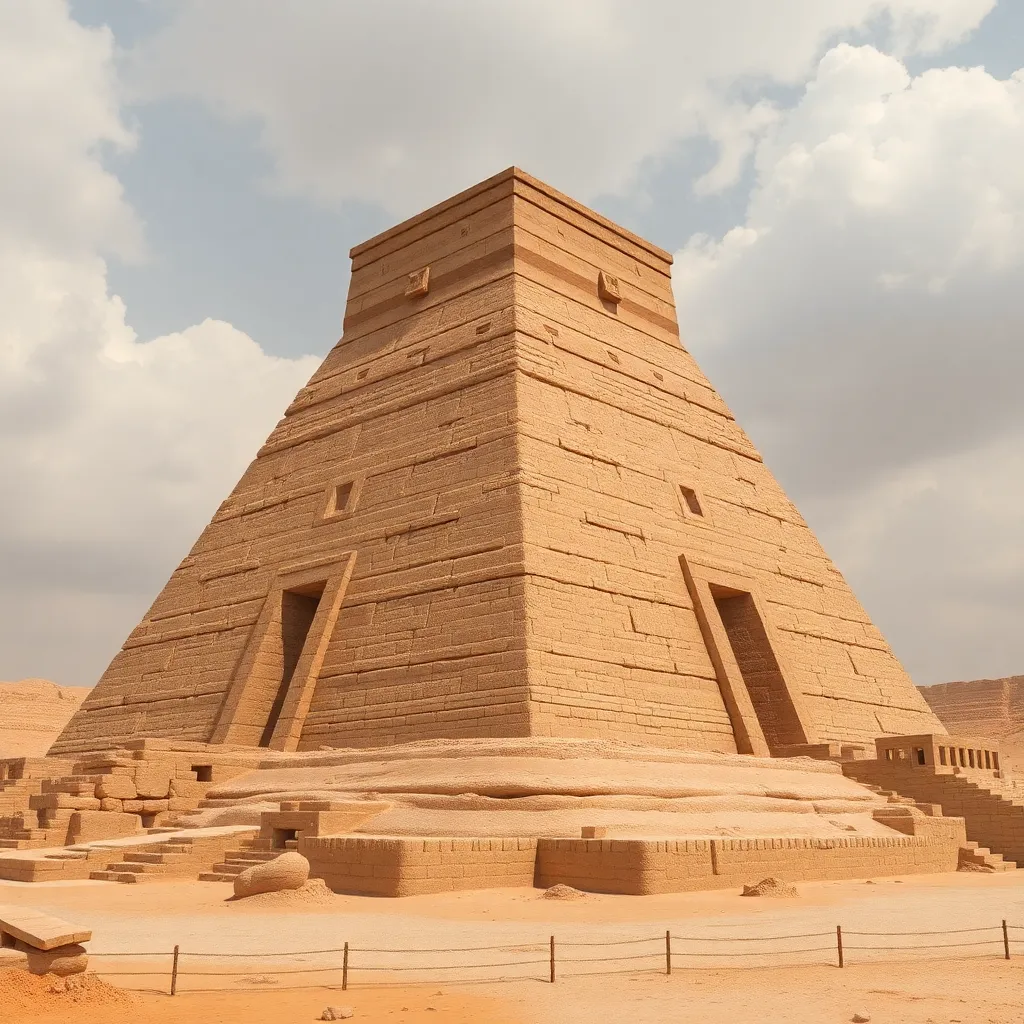The Pyramid of Senusret III: Engineering Mastery
I. Introduction
The Pyramid of Senusret III, located in the ancient site of Dahshur, stands as a testament to the architectural prowess of ancient Egyptian civilization. Constructed during the 12th dynasty, this pyramid not only showcases the engineering skills of its time but also reflects the cultural and religious beliefs of the Egyptians. This article aims to delve into the historical context, architectural design, engineering techniques, and cultural significance of the Pyramid of Senusret III, providing a comprehensive overview of its importance in the realm of ancient Egyptian architecture.
II. Historical Context
Senusret III ruled Egypt approximately from 1878 to 1839 BCE, a period marked by significant achievements in art, architecture, and military conquests. His reign is often considered a high point in the Middle Kingdom, a time when Egypt experienced a resurgence of power and cultural development. The Middle Kingdom was characterized by a consolidation of political power and an emphasis on monumental building projects.
Prior to Senusret III, pyramids like those of Sneferu and Khufu had set the stage for monumental architecture. The evolution of pyramid design saw a transition from the step pyramid form to the smooth-sided pyramids. Senusret III’s pyramid represents a further evolution in this architectural journey, signifying advancements in both design and construction techniques.
III. Architectural Design and Structure
The Pyramid of Senusret III is notable for its unique layout and dimensions. Unlike the traditional pyramidal shape, Senusret III’s pyramid exhibits a more elongated form, with a base measuring approximately 105 meters on each side and originally standing about 60 meters tall. Over time, erosion has reduced its height, but its impressive scale remains evident.
The construction materials primarily consisted of limestone, quarried locally, which was used for the core and the outer casing. The use of high-quality limestone indicates the pyramid’s intended grandeur and durability. Additionally, mudbrick was often used in the surrounding structures, demonstrating the combination of materials that characterized Middle Kingdom construction.
Innovations in design included a more complex internal layout, which featured multiple burial chambers and corridors, enhancing the security of the royal tomb. This evolution reflects a growing understanding of architectural principles and the need for protective measures against tomb robbers.
IV. Engineering Techniques
The construction methods employed in the building of the Pyramid of Senusret III highlight the ingenuity of ancient Egyptian engineers. Workers utilized a system of ramps, likely constructed from mudbrick and limestone chippings, to transport massive stones from the quarries to the pyramid site. These ramps allowed for the gradual ascent of materials, demonstrating an understanding of basic principles of physics.
Tools such as copper chisels, wooden sledges, and levers were essential for the construction process. The precision with which the stones were cut and placed speaks to the advanced craftsmanship of the workers. The pyramid’s stability and durability can be attributed to the careful selection of materials and the attention to structural integrity during construction.
V. The Site and Its Significance
Situated in Dahshur, the Pyramid of Senusret III is part of a broader landscape rich in historical significance. The location was strategically chosen, with the proximity to the Nile River facilitating the transportation of construction materials. The surrounding desert landscape also provided a natural barrier against potential threats.
Dahshur is home to several other pyramids, including those of Sneferu and other Middle Kingdom structures. The relationship between Senusret III’s pyramid and these nearby monuments underscores the continuity of royal funerary practices and architectural traditions in ancient Egypt.
VI. Cultural and Religious Importance
The Pyramid of Senusret III played a crucial role in Egyptian funerary practices, serving as a monumental tomb for the pharaoh and a symbol of his divine status. The pyramid was designed not only as a resting place but also as a means for the deceased to ascend to the afterlife, reflecting the Egyptians’ deep-seated beliefs in immortality and the afterlife.
Senusret III is often associated with themes of power and divine kingship. The pyramid, as a monumental representation of his reign, embodies the idea of the pharaoh as a god on earth, destined to join the gods after death. This belief system provides insights into the cultural and religious landscape of the Middle Kingdom, where the pharaoh’s role was central to maintaining cosmic order.
VII. Preservation and Archaeological Findings
Today, the Pyramid of Senusret III faces challenges in preservation due to natural erosion and human impact. The current state of the pyramid reflects centuries of wear, but ongoing archaeological efforts aim to mitigate these issues and protect this invaluable piece of history.
Major archaeological discoveries, including burial artifacts and inscriptions, have provided further insights into the life and reign of Senusret III. Research conducted at the site continues to enhance our understanding of the architectural techniques and cultural practices of the time.
However, preserving such ancient structures poses challenges, including environmental factors and the need for careful restoration techniques that respect the original materials and designs.
VIII. Conclusion
In conclusion, the Pyramid of Senusret III stands as an enduring symbol of ancient Egyptian engineering and cultural significance. Its architectural mastery reflects the advancements of the Middle Kingdom, while its role in funerary practices offers a glimpse into the beliefs of the time. The legacy of Senusret III continues to inspire researchers and historians, and future exploration of the site promises to uncover even more about this remarkable period in ancient Egyptian history.




